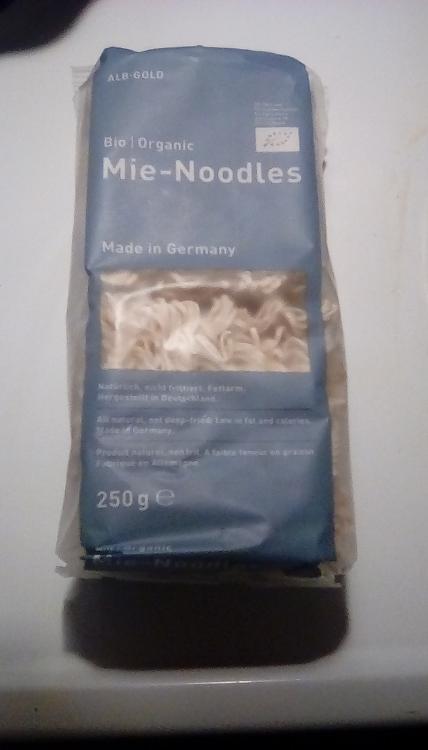A secret to cooking Bio | Organics Mie-Noodles, organic vermicelli
Posted by

 Radishrain
–
Radishrain
–
 Radishrain
–
Radishrain
–

Organics Mie-Noodles, organic vermicelli

Just to make sure we're talking about the same product, here's the barcode: 658842305694
Anyway, every ingredient is a wheat product. So, it's definitely appropriate in this forum.
My sister gave me a whole bunch of these as a healthier alternative to Ramen noodles. I tried cooking some like I usually cook Ramen, and the result was a bit offputting (it was overly filling and had a strong smell that made me think it needed cooking more, although the noodles were soft by that time).
Today, I tried something different:
• Boil a good amount of water on the highest heat level. The noodles should be able to entirely submerge in the water level throughout the whole cooking process. You definitely don't want to have to break them up or shift them around.
• Put one Ramen-sized piece in a pot, after it boils (not before).
• Keep boiling at the highest heat possible. Just blow on it if it starts to foam a lot.
• Don't ever stir, nor break up the noodles.
• After some minutes, it should smell better, and not so wheaty in that uncooked wheat pasta way.
• Drain all the water (refusing to stir it makes this easier without losing pasta, since it's in a clump). Draining the water probably isn't required, but that's what I did.
• Add a packet of Ramen seasoning, and mix it together. My sister wouldn't approve, but I haven't figured out the ideal way to season them, yet, and I've been making spaghetti with the regular Ramen (so, I have extra seasoning); I planned that on purpose, however.
Result:
• The pasta smells better.
• It's not as filling.
• The pasta is surprisingly and pleasantly al dente, notwithstanding it's very floppy. The other way, it was a bit gummy, but mostly like Ramen is.
Analysis:
• This pasta needs more heat and water than Ramen strictly needs, and is more sensitive to stirring.
• Cooking time is a bit longer than is absolutely necessary for Ramen.
• These noodles can be quite firm! (Or soft, if you cook them the less desirable way.)
• The high heat doesn't make the water froth as much as expected (but I did only use one packet of them; using more might make it froth more).
• They're more filling than Ramen, either way, but not quite as filling this new way.
• Definitely don't cook more than one Ramen-sized chunk the first time you make it. If it doesn't turn out, you won't want to have to eat much of it.
• When I first cooked these new noodles, I still cooked them longer than regular Ramen; so, cooking time in and of itself isn't the answer. However, I didn't cook them on as high of a temperature as long, to avoid it spilling over.
Key points:
• More water
• Don't touch the cooking noodles
• High heat, even after adding noodles
Here's how I've been cooking regular Ramen:
• Boil water at high heat, almost as little as possible to get the job done.
• Add a couple packs of Ramen.
• Shift the Ramen, turn it upside down and stuff to get it water exposure, so it softens. Then stir it up some.
• Turn the heat off at this point or before.
• Drain most of the water. (Some of the noodles inevitably get lost, due to how the noodles aren't still all connected. I haven't always been draining the water.)
• Add seasoning and mix it up thoroughly with a chopstick in each hand.
ramen_
noodle_
al_dente
| Free forum by Nabble | Edit this page |